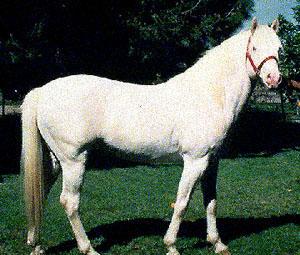Boa - Suriname Red Tail
Red Tail Boa, Jibóia Scientific Name: Boa constrictor constrictor
Thu, 3rd July, 2025 - 8:56 am GMT
Sponsor Ads:

Alternative Name
Red Tail Boa, Jibóia Scientific Name: Boa constrictor constrictorBasic Info
The Suriname Boa Constrictor is a highly sought after boa constrictor. They have pale colors beneath the striking patterns on their skin, typically a soft gray or tan. The name "red-tail" clearly refers to the deep red markings on their tails as well as the red saddle markings along their backs. They are large, hardy, powerful snakes and will be an eye-catching addition to your menagerie. They can grow up to ten feet in length. The Suriname Boa Constrictor has an interesting name. The term "red-tail" is a misnomer - almost all boa constrictors are called "red-tailed" constrictors by pet shop owners because many of them have red markings on their tails. The species Boa constrictor contains many varieties, which differ slightly in color and/or markings. Some classify the true Red Tails as a different subspecies, and though most people do not make a taxonomic distinction between the South American Boa Constrictors, true Red Tails are less common and more expensive than the common variety. Make sure you know what you are buying.
Health
Surinam Red Tail Boas are tropical reptiles. Their enclosure should be maintained at an average temperature of 70 to 80 degrees Fahrenheit. The enclosure should have a warmer basking spot about 90 degrees Fahrenheit and a cooler area as well. At night the cage should be about 10 degrees cooler than in the day. Humidity should be kept near 70%. Breeding Suriname Red-Tail Boa Constrictors produce between 10 and 60 live young, but they usually do not bear young consistently every year. The gestation period lasts between four and ten months.Habitat
N/ABehavior
The Suriname Red Tail Boa is a fascinating addition to any menagerie and an interesting specimen for snake lovers across the globe. These snakes can be fairly non-aggressive and calm, if they are handled regularly, and they are generally not fussy feeders. Because of their large adult size, keeping large boids like the Suriname Red Tail Boa can be difficult for even the most seasoned of snake keepers. Immature boas should be fed about once every seven to ten days. As adults, they do not need to eat quite as frequently. Mature Suriname Red Tail Boas should have a large enclosure to live in. Since they live both in trees and on the ground in the wild, provide them with a sturdy climbing branch as well as sufficient ground space. Red tails love to soak and should have a bowl large enough for them to coil up in. The Red Tails' water bowl usually requires frequent cleaning because they tend to defecate while soaking. Make sure the temperature in the cage has a warm spot and a cooler spot, so they can thermoregulate, and give them a temperature drop at night. They are primarily nocturnal and live in very humid forests in the wild. The average Suriname Red Tail will live somewhere between 20 and 25 years.Origin
South AmericaHistory
N/ACommon Foods
In the wild Suriname Red Tail Boas feed on small mammals and the occasional bird. In captivity a diet of mice, rats, and rabbits is sufficient, depending on the size of the boa. It is a good idea to feed pre-killed rodents, to prevent the snake from becomSponsor Ads:
Hardware is the part of a computer system that can be kicked and software is the part that can only be screamed at. -- Unknown
Boa - Suriname Red Tail
Coded by: BGID® | ALL RIGHTS RESERVED Copyright © 2000-2025
Disclaimer | Privacy | Report Errors / Contact | Credits








 Preparing For China. China is growing their military. China Military Technology - can it keep up with the US?
Preparing For China. China is growing their military. China Military Technology - can it keep up with the US?  versus
versus 

 versus
versus 
 This Thread is about the North Korean Military itself - the kind of army, navy, and air force they have.
This Thread is about the North Korean Military itself - the kind of army, navy, and air force they have. 
 versus
versus 
 versus
versus  versus
versus